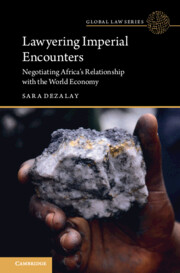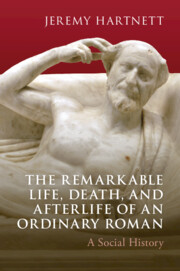Refine search
Actions for selected content:
90 results
6 - Diasporic State-Building and Its Legacies
-
- Book:
- Diasporic State-Building
- Published online:
- 25 November 2025
- Print publication:
- 18 December 2025, pp 184-206
-
- Chapter
- Export citation
20 - Looking Backward, Looking Forward
- from Part V - Reflections
-
- Book:
- The Artist's Life
- Published online:
- 04 November 2025
- Print publication:
- 20 November 2025, pp 147-155
-
- Chapter
- Export citation
Epilogue - ‘ … pour divers instruments’:
-
-
- Book:
- Debussy Studies 2
- Published online:
- 15 November 2025
- Print publication:
- 06 November 2025, pp 316-343
-
- Chapter
- Export citation
11 - Collective Remembering/Collective Forgetting
- from Part IV - Legacy
-
-
- Book:
- Debussy Studies 2
- Published online:
- 15 November 2025
- Print publication:
- 06 November 2025, pp 267-285
-
- Chapter
- Export citation
Conclusion
-
- Book:
- Letterworlds in Late Nineteenth-Century France
- Published online:
- 16 October 2025
- Print publication:
- 30 October 2025, pp 242-247
-
- Chapter
- Export citation
12 - Summary, Legacy, and Relevance
-
- Book:
- Before the Fed
- Published online:
- 16 October 2025
- Print publication:
- 30 October 2025, pp 187-204
-
- Chapter
- Export citation
Chapter 24 - Bloomsbury Afterlives
- from Coda
-
-
- Book:
- A History of the Bloomsbury Group
- Published online:
- 09 October 2025
- Print publication:
- 23 October 2025, pp 401-416
-
- Chapter
- Export citation
Introduction
-
- Journal:
- New Blackfriars ,
- Published online by Cambridge University Press:
- 29 September 2025, p. 1
-
- Article
- Export citation
Introduction
-
- Book:
- Moshe Dayan
- Published online:
- 03 April 2025
- Print publication:
- 10 April 2025, pp 1-20
-
- Chapter
-
- You have access
- HTML
- Export citation
The Life, Legacy, and Letters of Poet and Friend Nikki Giovanni
- Part of
-
- Journal:
- Public Humanities / Volume 1 / 2025
- Published online by Cambridge University Press:
- 14 March 2025, e73
-
- Article
-
- You have access
- Open access
- HTML
- Export citation
Justice in the Time of Cholera
-
- Journal:
- Asia-Pacific Journal / Volume 22 / Issue 3 / March 2024
- Published online by Cambridge University Press:
- 14 March 2025, e3
-
- Article
-
- You have access
- Open access
- Export citation
Coda
-
- Book:
- Otto Neurath in Britain
- Published online:
- 09 January 2025
- Print publication:
- 23 January 2025, pp 287-300
-
- Chapter
- Export citation
Introduction
-
-
- Book:
- Gerard Manley Hopkins in Context
- Published online:
- 16 January 2025
- Print publication:
- 16 January 2025, pp 1-4
-
- Chapter
- Export citation
Chapter 36 - Poetic Legacies post 1950
- from Part VII - Reception and Influence
-
-
- Book:
- Gerard Manley Hopkins in Context
- Published online:
- 16 January 2025
- Print publication:
- 16 January 2025, pp 310-317
-
- Chapter
- Export citation

Lawyering Imperial Encounters
- Negotiating Africa's Relationship with the World Economy
-
- Published online:
- 19 December 2024
- Print publication:
- 02 January 2025
Conclusion
-
- Book:
- The Quislings
- Published online:
- 12 December 2024
- Print publication:
- 19 December 2024, pp 298-304
-
- Chapter
- Export citation
Chapter 6 - Interpretation
-
- Book:
- The Quislings
- Published online:
- 12 December 2024
- Print publication:
- 19 December 2024, pp 226-256
-
- Chapter
- Export citation

The Remarkable Life, Death, and Afterlife of an Ordinary Roman
- A Social History
-
- Published online:
- 16 December 2024
- Print publication:
- 23 January 2025
6 - A “Pernicious” Communication
-
- Book:
- From Colonial Cuba to Madrid
- Published online:
- 14 November 2024
- Print publication:
- 21 November 2024, pp 208-229
-
- Chapter
- Export citation
Dialogue: The Role of the Editor
-
- Journal:
- New Theatre Quarterly / Volume 40 / Issue 4 / November 2024
- Published online by Cambridge University Press:
- 10 January 2025, pp. 291-304
- Print publication:
- November 2024
-
- Article
- Export citation
